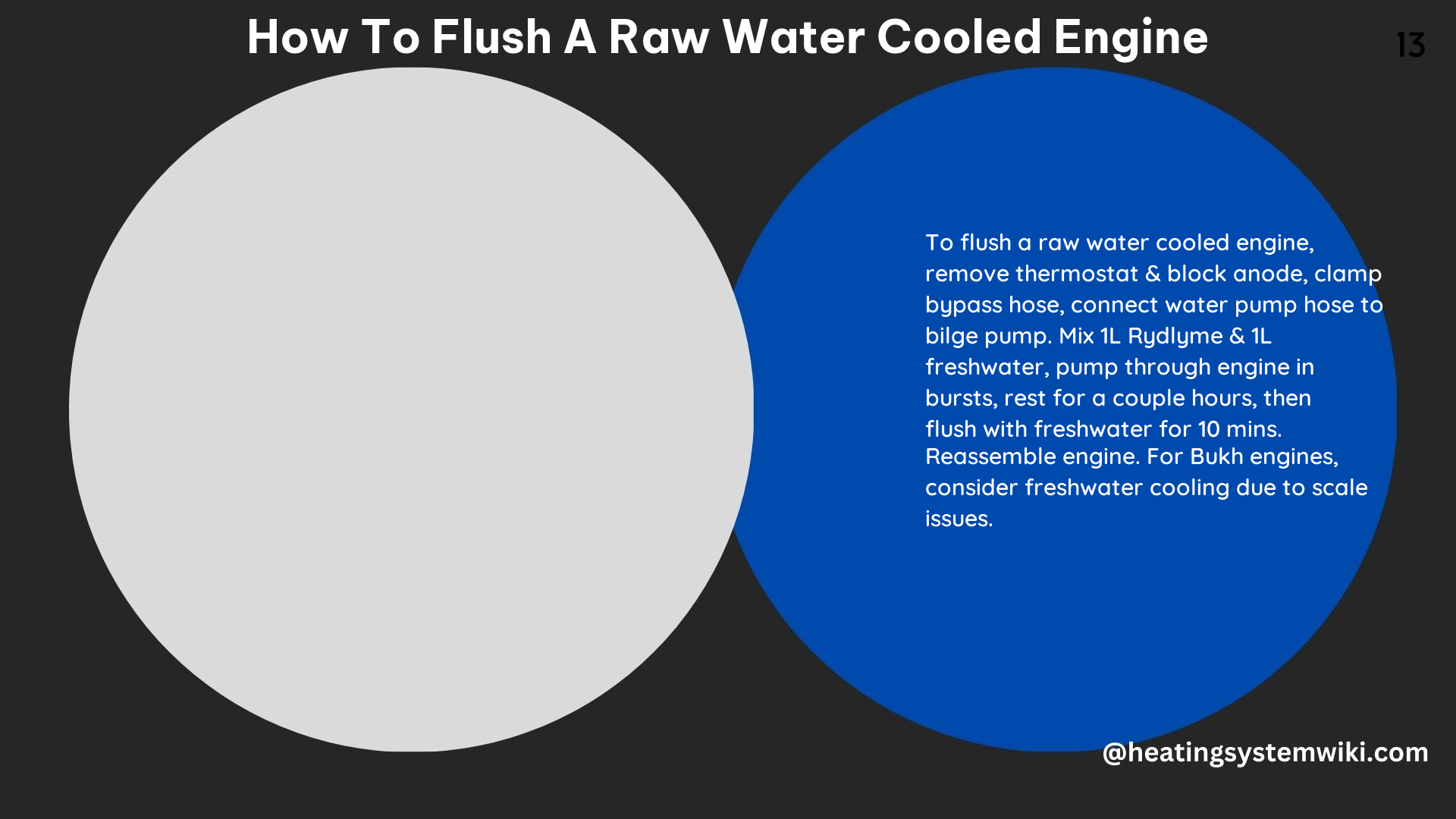Flushing a raw water cooled engine is a crucial maintenance task that helps to keep your boat’s cooling system in optimal condition. This process involves using fresh water to clean out the system, removing any debris or contaminants that may have accumulated over time. In this comprehensive guide, we’ll walk you through the step-by-step process, along with the technical specifications and a DIY approach to ensure your engine runs smoothly.
Preparation: Gather the Necessary Materials
Before you begin the flushing process, you’ll need to gather the following materials:
- A hose long enough to reach from the fresh water source to the engine
- A bucket large enough to hold the RydLyme and fresh water mixture
- A bilge pump or livewell pump (depending on the size of your engine)
- Fresh water source
Ensure that the bilge pump or livewell pump is rated for the size of your engine to ensure efficient flushing.
Disconnect the Raw Water System

Start by disconnecting the raw water system from the engine. This typically involves detaching the hose that leads from the raw water pump to the discharge into the exhaust. This step is crucial to allow the fresh water to flow through the system effectively.
Collect the RydLyme (If Using)
If you’re using RydLyme, a popular engine flushing solution, follow the manufacturer’s instructions carefully. This usually involves collecting the RydLyme in a bucket at the hose that had connected to the raw water pump outflow side.
Recirculate the RydLyme
Once you’ve collected the RydLyme, continuously recirculate it through the system for a specified period of time, typically 4 hours. This helps to break down and remove any buildup or deposits within the cooling system.
Flush with Fresh Water
After recirculating the RydLyme, it’s time to flush the system with fresh water. Use a high-pressure hose to ensure that all debris and contaminants are removed from the system. This step is crucial to prevent any remaining RydLyme or debris from causing issues in the future.
Reconnect the Raw Water System
Once the system has been flushed with fresh water, reconnect the raw water system to the engine. Ensure that all connections are secure and tight to prevent any leaks.
Run the Boat
Finally, run the boat to ensure that the system is functioning properly. Monitor the engine’s temperature and check for any signs of leaks or issues.
Technical Specifications
When flushing a raw water cooled engine, consider the following technical specifications:
- Hose length: The hose should be long enough to reach from the fresh water source to the engine, typically around 25-50 feet (7.6-15.2 meters) in length.
- Bucket size: The bucket should be large enough to hold the RydLyme and fresh water mixture, with a capacity of at least 5 gallons (18.9 liters).
- Pump specifications: If using a bilge pump or livewell pump, ensure that it is rated for the size of your engine, with a minimum flow rate of 500 gallons per hour (1,893 liters per hour).
- RydLyme recirculation: When recirculating the RydLyme, ensure that it is continuously moving to prevent any settling or buildup. Maintain a flow rate of at least 10 gallons per minute (37.9 liters per minute) for optimal results.
- Fresh water flushing: Use a high-pressure hose with a minimum flow rate of 10 gallons per minute (37.9 liters per minute) to ensure thorough flushing of the system.
DIY Approach
For a DIY approach to flushing a raw water cooled engine, consider the following steps:
- Remove the Zincs: Begin by removing the zincs from the engine.
- Reinstall Zinc Holder Bolts: Reinstall the zinc holder bolts without the zincs.
- Close Raw Water Intake Seacock: Close the raw water intake seacock.
- Detach Cooling Raw Water Discharge: Detach the point where cooling raw water would be discharged through the exhaust.
- Use Bilge Pump to Push RydLyme: Use the bilge pump or livewell pump to push the RydLyme through the cooling system in the opposite direction of normal flow.
- Collect RydLyme in Bucket: Collect the RydLyme in a bucket at the hose that had connected to the raw water pump outflow side.
- Continuously Recirculate RydLyme: Continuously recirculate the RydLyme for the recommended period of time, typically 4 hours.
- Flush System with Fresh Water: Flush the system with fresh water using a high-pressure hose.
- Install New Zincs: Install new zincs in the engine.
- Reconnect Hose to Raw Water Pump: Reconnect the hose to the raw water pump and to the discharge into the exhaust.
- Open Raw Water Seacock: Open the raw water seacock.
- Run the Boat: Run the boat to ensure that the system is functioning properly.
Remember to follow the manufacturer’s instructions and safety guidelines when performing any maintenance on your engine.
References:
– Flushing Raw Water System with Fresh Water
– Acid Flush Raw Water Side of Cooling System
– How to Flush a Raw Water Cooled Engine
